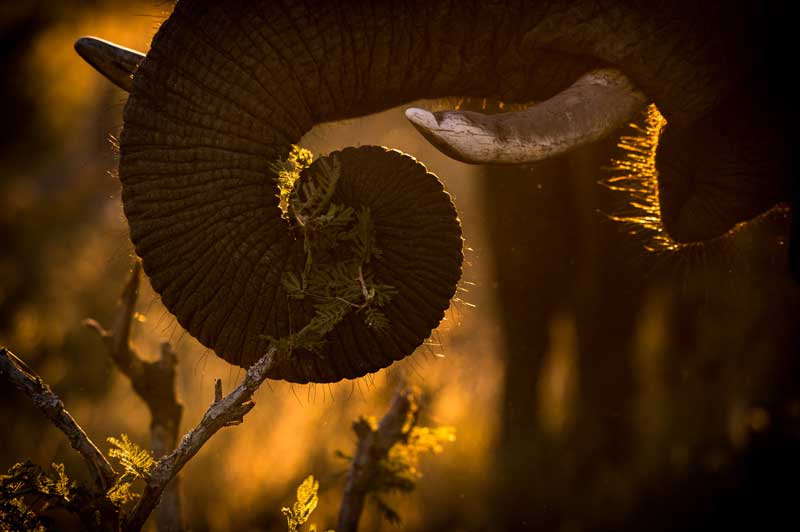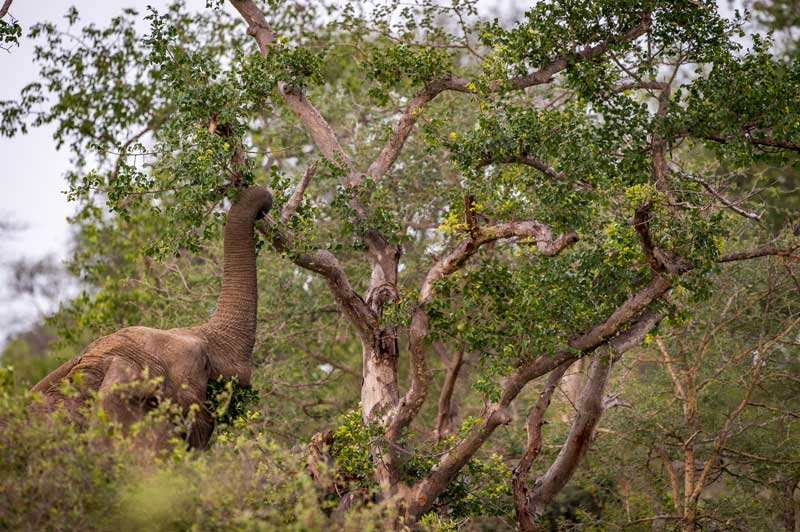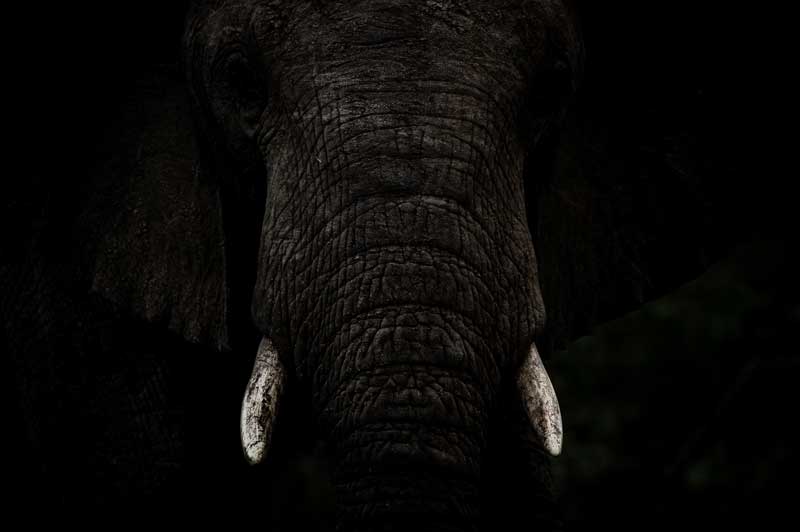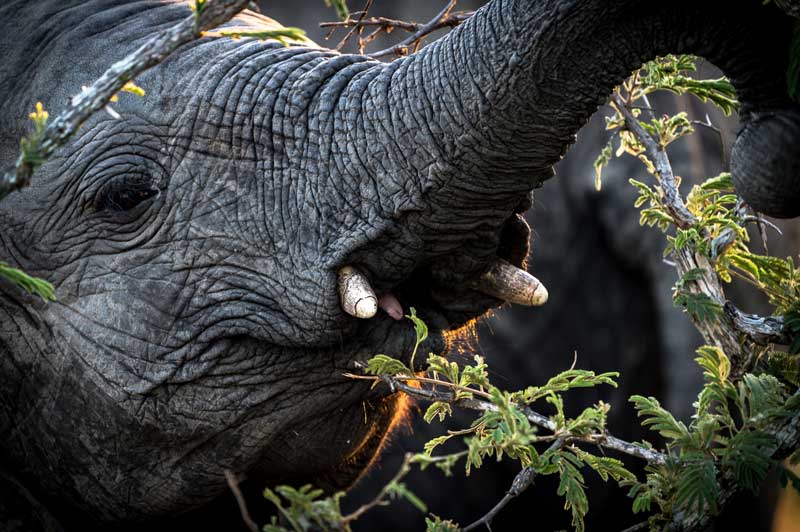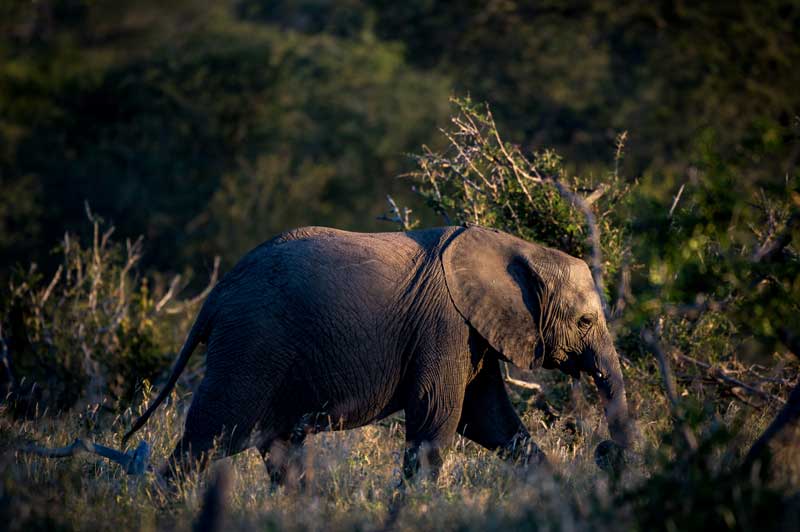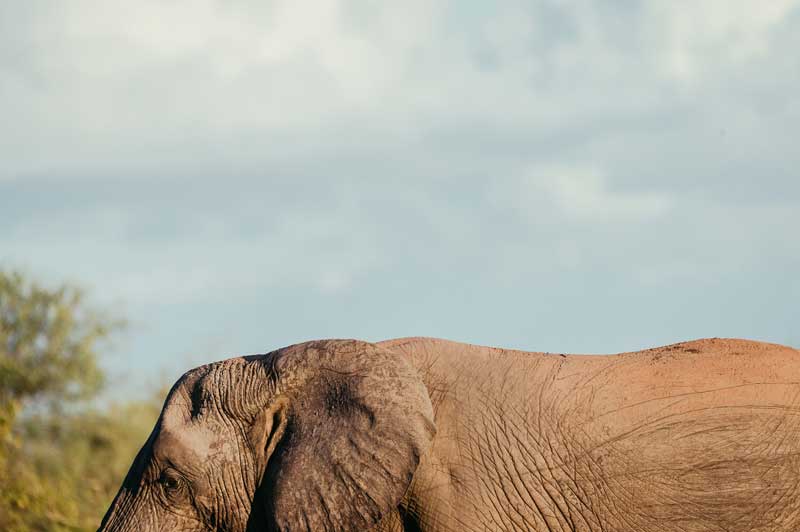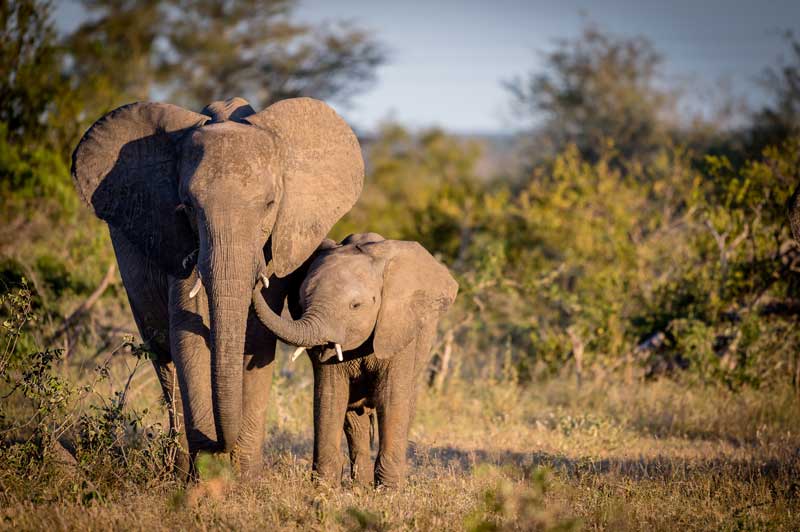Grey jumbos with their leathery hide and impressive tusks crunch their way through the bushveld wowing their onlookers with their emotive ways and giant presence. This larger-than-life herbivore is a much revered species and is one of the big five animals. Found in abundance throughout southern Africa, and in particular Botswana and Kruger, these emotional herbivores are one of the earth’s most intelligent species – so much so that they often visit the graveyard of deceased family members! Let’s take a look at the earth’s largest terrestrial animals and find out 5 facts about elephants, our emotive pachyderms.
1. They live in matriarchal herds
Elephants are raised in matriarchal herds. A breeding herd comprises the matriarch, older cows, sub-adult bulls and calves. When a calf is born, the older elephants help to raise the young. They will teach them how to navigate obstacles, use their trunks, and protect them from predators. Sub-adult bulls will engage in play-fighting and will often take to the water to practice their skills and assert dominance. When bulls reach an age when they are testosterone filled, they tend to leave the herd and form loose associations with other young bulls. Bulls only really rejoin breeding herds when it’s time to mate.
2. Swimming is their favourite sport
Elephants love nothing more than to swim, bathe and roll around in mud pools. Elephants smother themselves in mud, which serves as a protective layer on their skin. The layer forms a natural sunscreen and also helps to remove annoying parasites, which happens when they rub against trees. Elephants are avid swimmers and will use their trunks as a snorkel will fully submerged underwater.
3. Their trunks have many uses
When they use their trunks as snorkels, they don’t need any other aids. They walk across the bottom of rivers and waterholes with their bodies fully submerged.
Trunks have finger like protrusions at the end of their trunks and these “fingers” help to remove fresh vegetation and branches from trees. Trunks boast an incredible 40, 000 muscles, each of which work together to provide practical “services” to individuals. This includes soaking up gallons of water, a keen sense of smell and heavy-lifting duties – a trunk can life up to 350 kilograms in weight.
4. They don’t actually destroy surrounding vegetation
We observe these cumbersome creatures ripping branches off trees, uprooting vegetation and trampling precious bushveld. To the naked eye, it appears that elephants are destroying the delicate environment but in actual fact, they’re inadvertently creating micro-habitats for smaller creatures. When a tree is uprooted, new grasses and shoots are revealed, which means more food for herbivores. Ground-dwelling critters make their homes in areas where there are gaps in the vegetation. Elephants create pathways for other creatures and also aid the spread of seeds in the ecosystem.
5. Elephants have a unique set of intelligent emotions, unlike other animals
Elephants have the ability to express joy, grief, anger and a range of other emotions. They have a complex consciousnesses and even the reunion between family members contains heightened emotions. Elephants have the largest brain of any land animal, which partly explains why they have such a range of emotions.

